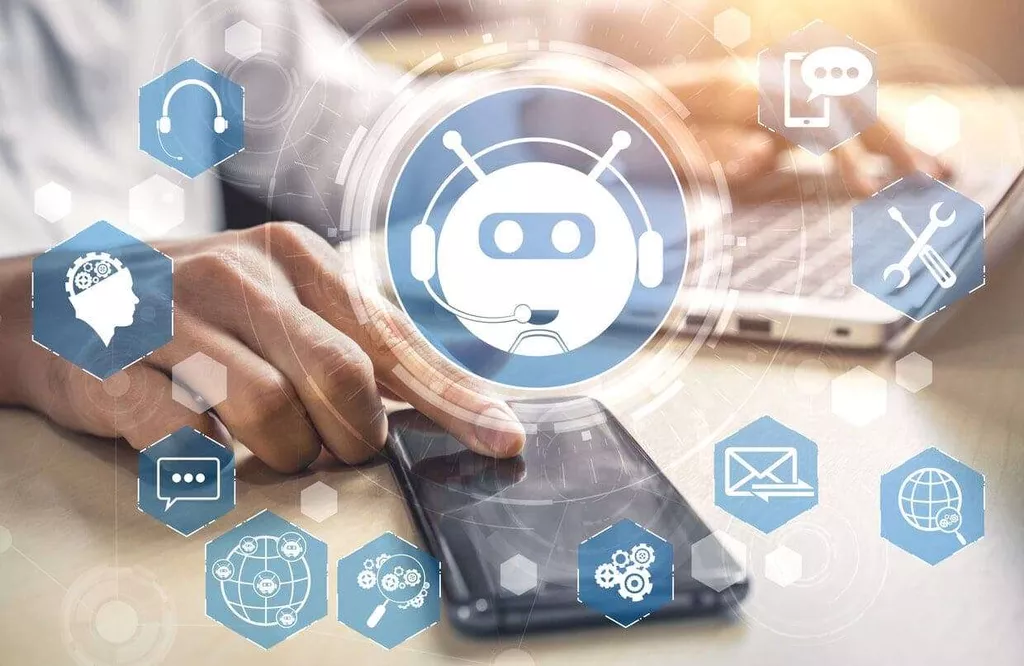Perplexity launches Sonar API, enabling enterprise AI search integration
Google expands AI Overviews in Circle to Search for the Galaxy S25 series and more

In November, Cosine banned its engineers from using tools other than its own products. It is now seeing the impact of Genie on its own engineers, who often find themselves watching the tool as it comes up with code for them. “You now give the model the outcome you would like, and it goes ahead and worries about the implementation for you,” says Yang Li, another Cosine cofounder. “I personally have a very strong belief that large language models will get us all the way to being as capable as a software developer,” says Kant. Cosine claims that its generative coding assistant, called Genie, tops the leaderboard on SWE-Bench, a standard set of tests for coding models.
With some forecasts calling for the multimodal artificial intelligence market to grow more than 35% annually over the next few years, Google LLC is betting it can grab a pole position. Google Cloud also shared enhancements made to its Search for commerce tool that can be accessed via the Vertex AI platform. The tool can be used to create an internal search experience for websites and domains to help customers navigate through different pages and find the product easily. To ensure generative AI serves society without undermining creators, we need new legal and ethical frameworks that address these challenges head-on. Only by evolving beyond traditional fair use can we strike a balance between innovation and protecting the rights of those who fuel creativity. The fair use doctrine was designed for specific, limited scenarios—not for the large-scale, automated consumption of copyrighted material by generative AI.
Approach AI Like A User
Generative AI technologies utilizing natural language processing (NLP) allow analysts to ask complex questions regarding threats and adversary behavior, returning rapid and accurate responses[4]. These AI models, such as those hosted on platforms like Google Cloud AI, provide natural language summaries and insights, offering recommended actions against detected threats[4]. This capability is critical, given the sophisticated nature of threats posed by malicious actors who use AI with increasing speed and scale[4]. The integration of federated deep learning in cybersecurity offers improved security and privacy measures by detecting cybersecurity attacks and reducing data leakage risks. Combining federated learning with blockchain technology further reinforces security control over stored and shared data in IoT networks[8].
Instead of providing developers with a kind of supercharged autocomplete, like most existing tools, this next generation can prototype, test, and debug code for you. The upshot is that developers could essentially turn into managers, who may spend more time reviewing and correcting code written by a model than writing it from scratch themselves. Anthropic ramped up its technology development throughout last year, and in October, the startup said that its AI agents were able to use computers like humans can to complete complex tasks. Anthropic’s Computer Use capability allows its technology to interpret what’s on a computer screen, select buttons, enter text, navigate websites and execute tasks through any software and real-time internet browsing, the startup said.
In a blog post, Perplexity described Sonar API as “lightweight, affordable, fast, and simple to use,” noting that it includes features such as citations and the ability to customize sources. The company said the API is ideal for businesses requiring streamlined question-and-answer functionalities optimized for speed. From chatbots dishing out illegal advice to dodgy AI-generated search results, take a look back over the year’s top AI failures. Despite fewer clicks, copyright fights, and sometimes iffy answers, AI could unlock new ways to summon all the world’s knowledge.
As the shortage of advanced security personnel becomes a global issue, the use of generative AI in security operations is becoming essential. For instance, generative AI aids in the automatic generation of investigation queries during threat hunting and reduces false positives in security incident detection, thereby assisting security operations center (SOC) analysts[2]. Anthropic, best known for its Claude family of AI models, is one of the leading start-ups in the new wave of generative AI companies building tools to generate text, images, and code in response to user prompts. RLCE is analogous to the technique used to make chatbots like ChatGPT slick conversationalists, known as RLHF—reinforcement learning from human feedback.
One of the most significant fair use factors is the effect on the market for the original work. Generative AI threatens to disrupt creative markets by producing high-quality content at scale. Generative AI has emerged as a transformative force in technology, creating text, art, music and code that can rival human efforts. However, its rise has sparked significant debates around copyright law, particularly regarding the concept of fair use.
Generative AI models are trained on vast datasets, often containing copyrighted materials scraped from the internet, including books, articles, music and art. These models don’t explicitly store this content but learn patterns and structures, enabling them to generate outputs that may closely mimic or resemble the training data. Generative AI, while offering promising capabilities for enhancing cybersecurity, also presents several challenges and limitations.
OpenAI debuts AI agent Operator to transform web task automation
Geo-targeting becomes a vital strategy for brands to deliver tailored experiences…
The concept of utilizing artificial intelligence in cybersecurity has evolved significantly over the years. With the advent of generative AI, the landscape of cybersecurity has transformed dramatically. This technology has brought both opportunities and challenges, as it enhances the ability to detect and neutralize cyber threats while also posing risks if exploited by cybercriminals [3]. The dual nature of generative AI in cybersecurity underscores the need for careful implementation and regulation to harness its benefits while mitigating potential drawbacks[4] [5]. The future of generative AI in combating cybersecurity threats looks promising due to its potential to revolutionize threat detection and response mechanisms. This technology not only aids in identifying and neutralizing cyber threats more efficiently but also automates routine security tasks, allowing cybersecurity professionals to concentrate on more complex challenges [3].
People who know how to use AI will replace those who are not trained or certified in AI. Although real-time information capabilities offer clear advantages, they also introduce additional complexities to an already intricate landscape. However, significant challenges remain in areas such as data privacy, depth, scale, and audit trails before any company can establish itself as a leader in the field. The launch positions Perplexity as a stronger, more direct competitor to larger players such as OpenAI and Google, offering its real-time, web-connected search capabilities to users. “Right now I’m more confident than I have been at any previous time that we are very close to powerful capabilities…
Generative AI offers significant advantages in the realm of cybersecurity, primarily due to its capability to rapidly process and analyze vast amounts of data, thereby speeding up incident response times. Elie Bursztein from Google and DeepMind highlighted that generative AI could potentially model incidents or produce near real-time incident reports, drastically improving response rates to cyber threats[4]. This efficiency allows organizations to detect threats with the same speed and sophistication as the attackers, ultimately enhancing their security posture[4]. These advanced technologies demonstrate the powerful potential of generative AI to not only enhance existing cybersecurity measures but also to adapt to and anticipate the evolving landscape of cyber threats. The application of generative AI in cybersecurity is further complicated by issues of bias and discrimination, as the models are trained on datasets that may perpetuate existing prejudices. This raises concerns about the fairness and impartiality of AI-generated outputs, particularly in security contexts where accuracy is critical.
AI systems that are better than almost all humans at almost all tasks,” Anthropic chief executive Dario Amodei said in an interview with CNBC on Tuesday. Not only does this approach get straight to the logic of programming, it’s also fast, because millions of lines of code are reduced to a few thousand lines of intermediate language before the system analyzes them. The goal is to build models that don’t just mimic what good code looks like—whether it works well or not—but mimic the process that produces such code in the first place. There’s the sense in which a program’s syntax (its grammar) is correct—meaning all the words, numbers, and mathematical operators are in the right place.
They often have teams of analysts working for them to ensure they’re invested in the best stocks. This especially rings true for a massive movement like artificial intelligence (AI), which can potentially shape the world for decades to come. There are also concerns regarding bias and discrimination embedded in generative AI systems. The data used to train these models can perpetuate existing biases, raising questions about the trustworthiness and interpretability of the outputs [5].
Moreover, generative AI’s ability to simulate various scenarios is critical in developing robust defenses against both known and emerging threats. By automating routine security tasks, it frees cybersecurity teams to tackle more complex challenges, optimizing resource allocation [3]. Generative AI also provides advanced training environments by offering realistic and dynamic scenarios, which enhance the decision-making skills of IT security professionals [3]. Google announced new artificial intelligence (AI) search and agentic tools for retail-focused enterprises on Sunday. These announcements were made at the ongoing National Retail Federation’s (NRF) 2025 event.
Generative AI is revolutionizing the field of cybersecurity by providing advanced tools for threat detection, analysis, and response, thus significantly enhancing the ability of organizations to safeguard their digital assets. This technology allows for the automation of routine security tasks, facilitating a more proactive approach to threat management and allowing security professionals to focus on complex challenges. The adaptability and learning capabilities of generative AI make it a valuable asset in the dynamic and ever-evolving cybersecurity landscape [1][2].
And in practice, this means that what I’m seeing on my fellow tourists’ screens is often very different from the scene I’m actually witnessing. Yet the more I’ve picked up the latest AI-powered phones, from the Samsung Galaxy S24 Ultra to the Google Pixel 9, the more I’m starting to worry about the future of photography. Gemini can run directly on top of BigQuery’s data foundation, eliminating the need for data transfers. You can use more nuanced prompts, like “Get the house ready for bedtime but set the temperature a little warmer,” to have Gemini tell your smart thermostat to set the temperature a degree or two warmer than the previous night. Imagine sitting in your living room on a cloudy day, trying to read a book on your favorite chair, when you realize it’s suddenly too dark. In December, Anthropic’s revenue hit an annualized $1 billion, which was an increase of roughly 10x year over year, the source said.
Trained on billions of pieces of code, they have assimilated the surface-level structures of many types of programs. Google estimates that 90% of enterprise data is unstructured, Ahmad said in an interview with SiliconANGLE. By combining technologies such as image and voice recognition with structured data for retrieval-augmented generation training, organizations can unlock insights from previously unusable data, she said. If you are going to learn AI, there are a number of free classes online that would be a great place to start. AI is here to stay, but it won’t be replacing humans anytime soon, as the human touch still needs to be added to any AI content.
Be A Learner
Generative AI models are trained on massive datasets, often containing millions of works. While individual pieces may contribute minimally, the sheer scale of usage complicates the argument for fair use. Fair use traditionally applies to specific, limited uses—not wholesale ingestion of copyrighted content on a global scale. Moreover, a thematic analysis based on the NIST cybersecurity framework has been conducted to classify AI use cases, demonstrating the diverse applications of AI in cybersecurity contexts[15]. Addressing these challenges requires proactive measures, including AI ethics reviews and robust data governance policies[12].
With new features and tools being released on a consistent basis, it can be difficult for professionals to know where to start or how to keep up in a constantly changing field. Below, 20 Forbes Business Council members share tips to help professionals effectively break into the AI or generative AI field of work. If you look at how Alphabet integrates AI into its inner workings, it’s clear why Alphabet is a top pick among billionaire hedge funds.
An open call for the next Google.org Accelerator: Generative AI – The Keyword
An open call for the next Google.org Accelerator: Generative AI.
Posted: Wed, 15 Jan 2025 08:00:00 GMT [source]
While generative AI offers robust tools for cyber defense, it also presents new challenges as cybercriminals exploit these technologies for malicious purposes. For instance, adversaries use generative AI to create sophisticated threats at scale, identify vulnerabilities, and bypass security protocols. Notably, social engineers employ generative AI to craft convincing phishing scams and deepfakes, thus amplifying the threat landscape[4].
That’s because to really build a model that can generate code, Gottschlich argues, you need to work at the level of the underlying logic that code represents, not the code itself. Merly’s system is therefore trained on an intermediate representation—something like the machine-readable notation that most programming languages get translated into before they are run. To do that, you need a data set that captures that process—the steps a human developer might take when writing code. Think of those steps as a breadcrumb trail that a machine could follow to produce a similar piece of code itself.
This led to massive growth for Google Cloud, which saw revenue rise 35% year over year in Q3. But for the tool to succeed, significant customization may be necessary, tailored to specific industries and individual companies. To stay competitive, Perplexity will need to explore other differentiators, such as compliance, Gogia said. It will also provide approximately twice the number of citations per search compared to the standard Sonar API, the company said.
Advertise with MIT Technology Review
Collaboration between technologists, legal experts, and policymakers is essential to develop effective legal and ethical frameworks that can keep pace with the rapid advancements in AI technology[12]. Many companies will use this technology to cut down on the number of programmers they hire. At one end there will be elite developers with million-dollar salaries who can diagnose problems when the AI goes wrong. At the other end, smaller teams of 10 to 20 people will do a job that once required hundreds of coders. Instead of training a large language model to generate code by feeding it lots of examples, Merly does not show its system human-written code at all.
This indicates that the market values Alphabet as it does an average stock in the S&P 500, even though its track record and growth clearly indicate that to be a false assumption. However, the stock isn’t highly valued because Google Gemini is often seen as a second-place finisher to competition like ChatGPT. I think this is a huge mistake by the market, as most of the value from generative AI will come from how companies integrate AI into their services, and Alphabet has done extremely well at that. Cloud computing is a massive part of the AI arms race that isn’t talked about enough. While some of the biggest AI competitors have access to nearly unlimited computing power, most competitors don’t. To keep their costs down, they rent that computing power from a cloud computing provider like Google Cloud.
Companies and security firms worldwide are investing in this technology to streamline security protocols, improve response times, and bolster their defenses against emerging threats. As the field continues to evolve, it will be crucial to balance the transformative potential of generative AI with appropriate oversight and regulation to mitigate risks and maximize its benefits [7][8]. Despite its potential, the use of generative AI in cybersecurity is not without challenges and controversies. A significant concern is the dual-use nature of this technology, as cybercriminals can exploit it to develop sophisticated threats, such as phishing scams and deepfakes, thereby amplifying the threat landscape. Additionally, generative AI systems may occasionally produce inaccurate or misleading information, known as hallucinations, which can undermine the reliability of AI-driven security measures. Furthermore, ethical and legal issues, including data privacy and intellectual property rights, remain pressing challenges that require ongoing attention and robust governance [3][4].
This is particularly problematic in cybersecurity, where impartiality and accuracy are paramount. Nonetheless, investors are not anticipating that Anthropic or its rivals will be profitable in the near future, given the steep costs of developing leading AI models. With new breakthroughs, they believe the technology could ultimately create trillions of dollars in value. Despite their focus on products that developers will want to use today, most of these companies have their sights on a far bigger payoff. Visit Cosine’s website and the company introduces itself as a “Human Reasoning Lab.” It sees coding as just the first step toward a more general-purpose model that can mimic human problem-solving in a number of domains. Most software teams use bug-reporting tools that let people upload descriptions of errors they have encountered.
Currently, the platform allows the creation of agents for inventory management, customer service, and connecting with various third-party applications such as Slack, GitHub, Drive, Outlook, and more. Enterprises can build personalised AI agents to improve their customer experience. The tech giant says that AI agents built via Agentspace can offer product recommendations, answer queries, and guide buyers through their shopping process. When AI-generated content competes with human creators, courts are unlikely to view its use of copyrighted material as fair.
“This combination of multimodal data and AI enables a level of personalization and scalability that was previously unattainable,” Ahmad said. United Parcel Service Inc. built a dashboard that uses truck-mounted sensor data to optimize real-time delivery routes by issuing specific instructions to drivers in real-time. Bell Canada is using AI-generated transcripts of calls to its contact center to train a coaching assistant that delivers feedback to agents. The company’s cloud computing unit recently asserted that multimodal AI, which combines text, images, video, audio and other unstructured data with generative AI processing, will be one of the top five AI trends of 2025.
Moreover, users retain the ability to write a bit text in case they’d like to refine what the AI is searching for. Alphabet is one of the cheapest ways to play the AI investment trend, and it’s no wonder it’s a top holding among billionaire hedge funds. I think it’s a top buy now, and this list of other AI stocks owned by billionaire hedge funds is a great place to find other ideas as well. For reference, the S&P 500 trades at 25.6 times trailing earnings and 22.6 times forward earnings.
Even if some uses of generative AI were deemed legal under fair use, ethical concerns remain. Should creators have the right to opt out of having their works used in AI training datasets? Should AI companies share profits with the creators whose works were used for training? These questions highlight the broader moral implications of AI’s reliance on copyrighted material. Most datasets used to train generative AI models include copyrighted materials without the creators’ consent.
But there’s a serious point to be made about what the people building this technology think the end goal really is. These tools also make it possible to protype multiple versions of a system at once. You can get a coding assistant to simultaneously try out several different options—Stripe, Mango, Checkout—instead of having to code them by hand one at a time. Copilot, a tool built on top of OpenAI’s large language models and launched by Microsoft-backed GitHub in 2022, is now used by millions of developers around the world. Millions more turn to general-purpose chatbots like Anthropic’s Claude, OpenAI’s ChatGPT, and Google DeepMind’s Gemini for everyday help. A string of startups are racing to build models that can produce better and better software.
- In a blog post, Perplexity described Sonar API as “lightweight, affordable, fast, and simple to use,” noting that it includes features such as citations and the ability to customize sources.
- Anthropic’s Computer Use capability allows its technology to interpret what’s on a computer screen, select buttons, enter text, navigate websites and execute tasks through any software and real-time internet browsing, the startup said.
- GANs are also being leveraged for asymmetric cryptographic functions within the Internet of Things (IoT), enhancing the security and privacy of these networks[8].
By continuously learning from data, these models adapt to new and evolving threats, ensuring detection mechanisms are steps ahead of potential attackers. This proactive approach not only mitigates the risks of breaches but also minimizes their impact. For security event and incident management (SIEM), generative AI enhances data analysis and anomaly detection by learning from historical security data and establishing a baseline of normal network behavior [3].
An example is SentinelOne’s AI platform, Purple AI, which synthesizes threat intelligence and contextual insights to simplify complex investigation procedures[9]. Such applications underscore the transformative potential of generative AI in modern cyber defense strategies, providing both new challenges and opportunities for security professionals to address the evolving threat landscape. ANNs are widely used machine learning methods that have been particularly effective in detecting malware and other cybersecurity threats. The backpropagation algorithm is the most frequent learning technique employed for supervised learning with ANNs, allowing the model to improve its accuracy over time by adjusting weights based on error rates[6]. However, implementing ANNs in intrusion detection does present certain challenges, though performance can be enhanced with continued research and development [7].




